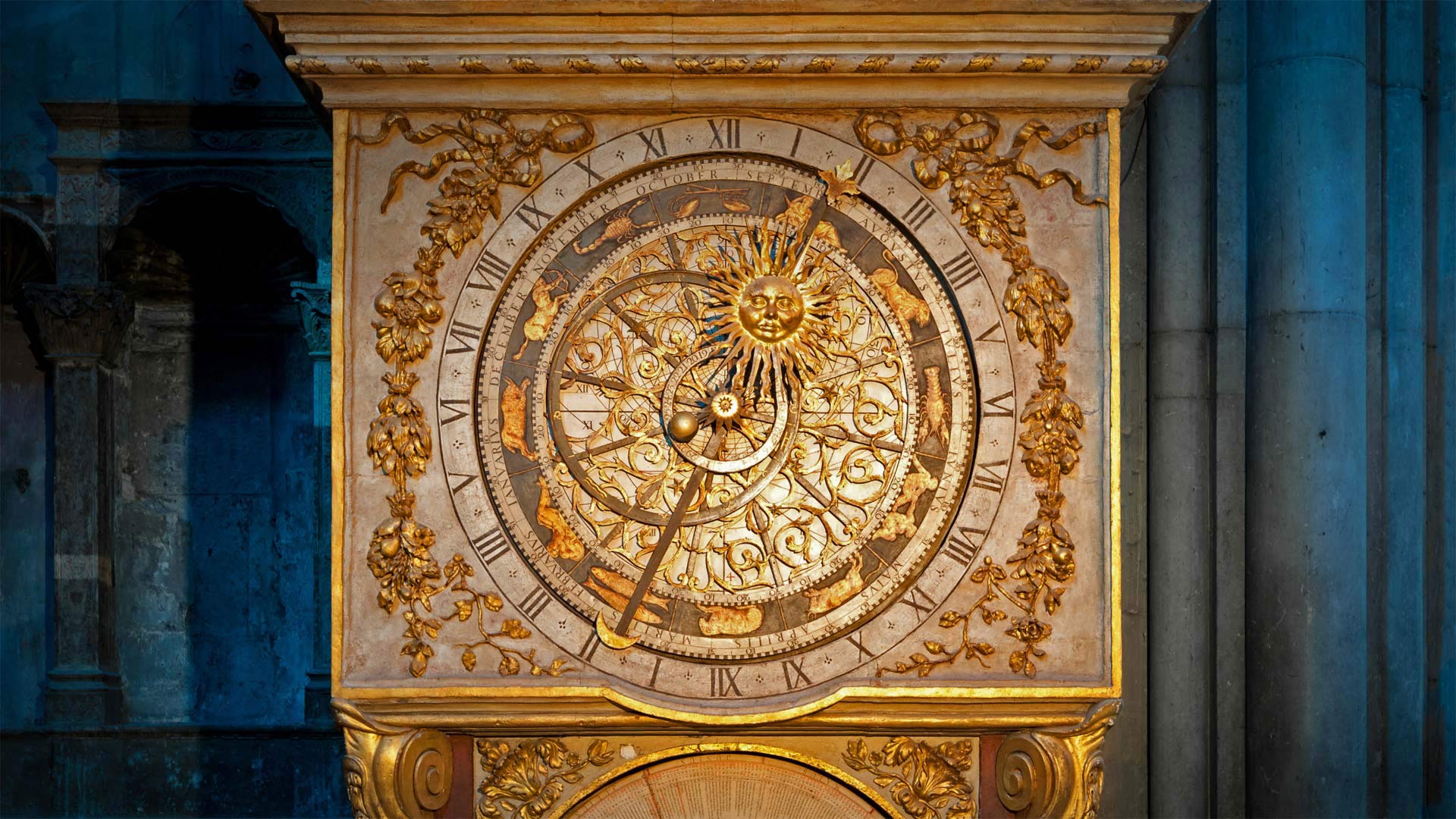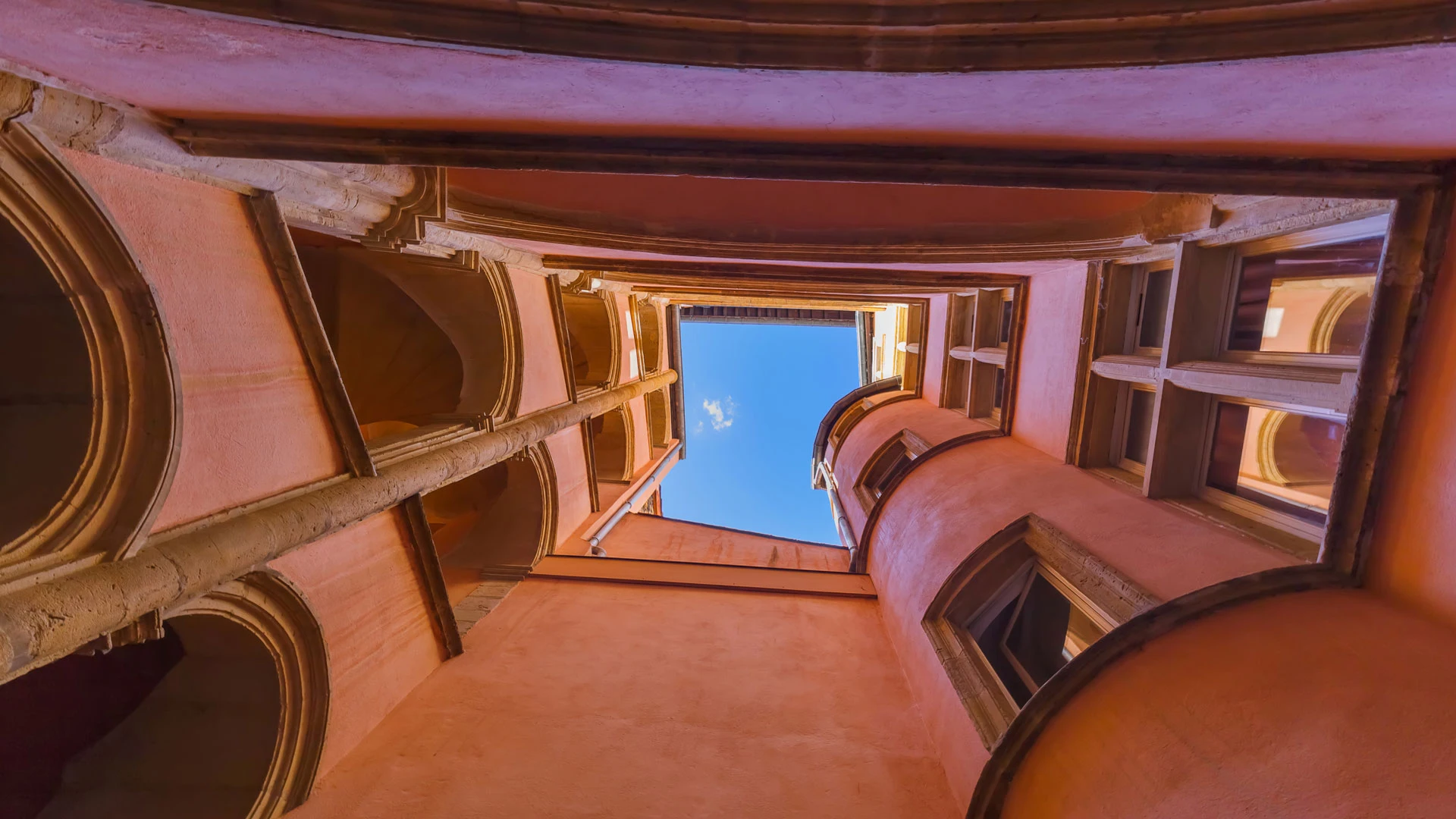里昂的一条穿廊,法国 A traboule in Lyon, France (© TPopova/Getty Images)
里昂的一条穿廊,法国 A traboule in Lyon, France (© TPopova/Getty Images)
承载过往的篇章 Passages with a past
里昂的一条穿廊,法国
在法国里昂,你不只是简单地走过街巷,而是像在城市的脉络中轻盈滑行。这里的穿廊,是一条条隐秘的通道,蜿蜒穿梭于庭院与建筑之间,将简单的散步变成一场寻宝之旅。它们曾是最早的捷径,帮助居民避雨、搬运货物,或悄然穿过中世纪街区。如今,这些通道更多承载的是探索的乐趣。它们的历史可追溯至公元四世纪,在文艺复兴时期更显重要——当时丝绸商人利用这些通道,将珍贵织物从作坊安全运送到河边,免受风雨侵扰。二战期间,抵抗运动战士也曾借助这些通道作为秘密逃生路线。走进里昂,你会发现,每一条穿廊都藏着故事,每一次转角都可能遇见历史的回声。
A traboule in Lyon, France
In Lyon, France, you don't just walk through the city—you glide through it. The traboules, a network of hidden passageways threading between courtyards and buildings, turn a simple stroll into a treasure hunt. They were the original shortcuts, allowing residents to dodge rain, carry goods, or move discreetly through the medieval quarters. Today, they're less about practicality and more about discovery. These passages date back to the fourth century but became essential during the Renaissance, when silk traders used them to shuttle delicate fabrics safely from workshops to the river without braving the weather. Later, during World War II, Resistance fighters used the traboules as escape routes.
Most of Lyon's traboules are tucked away in the Vieux Lyon and Croix-Rousse districts. Push open what looks like an ordinary wooden door, and you might step into a courtyard with spiral staircases, arched galleries, and stone corridors that snake between buildings. Some passages are public, some private, and all of them blur the line between indoors and outdoors. Walking a traboule is like flipping through the city's footnotes. You're right in the heart of a living neighborhood, yet moving through centuries of history.
里昂天文钟,法国里昂 Lyon astronomical clock, Lyon, France (© kyolshin/Alamy)

里昂天文钟,法国里昂 Lyon astronomical clock, Lyon, France (© kyolshin/Alamy)
Perfect timing
If the first day of daylight saving time doesn't have you springing for joy, this towering timekeeper might be more your speed. The astronomical clock at Lyon Cathedral in France was built in 1660, long before daylight time became widely adopted in the 20th century. The clock's intersecting hands and dials don't just tell time, they form a flattened model of our planet that tracks the positions of the sun and moon relative to Earth. The zodiac dial, offset to account for the planet's rotational tilt, shows the star sign currently in season.
All this movement of circles and spheres might call to mind another observance of the day: March 14 is Pi Day, in celebration of the mathematical constant pi (aka π, or roughly 3.14). You remember pi from geometry class: It expresses the ratio of the distance around a circle to the distance across it. So it was essential to ancient astronomers who mapped these celestial workings, as well as to designers of intricate machines that simulate the circling heavens.
Wow, you kept reading through all the math talk? You deserve a sweet payoff. Why not slice into our Pi Day pie quiz?
完美的时机
如果夏令时的第一天没有让你欣喜若狂,那么这个高耸的计时员可能会比你更快。法国里昂大教堂的天文钟建于1660年,远远早于20世纪白天被广泛采用。时钟交叉的指针和刻度盘不仅告诉我们时间,它们还形成了一个地球的平面模型,跟踪太阳和月球相对于地球的位置。黄道十二宫的刻度盘,抵消了这颗行星的自转倾斜,显示了目前正处于这个季节的星座。
所有这些圆圈和球体的运动可能会让人想起另一个纪念日:3月14日是π日,庆祝数学常数π(又名π,约3.14)。您还记得几何类中的pi:它表示圆周围的距离与穿过圆的距离之比。因此,这对绘制这些天体运行图的古代天文学家,以及模拟环绕天空的复杂机器的设计者来说,都是至关重要的。
哇,你一直在读数学课?你应该得到一个甜蜜的回报。为什么不加入我们的派日测验呢?
